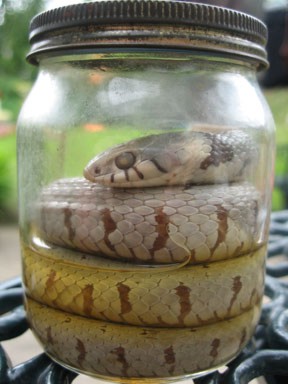Mixed feelings: when the top of the food chain moves in with pond life…
By Ruth D’Alessandro, The Wildlife Gardener I know my wiggles. And I don’t mean those strange middle-aged Australian men in polo-necked jumpers who gyrate about for preschool children. I saw a very strange wiggle the other day. Every creature in The Wildlife Pond has a different wiggle:
- Pond skaters make the slightest of wiggles on the pond surface. So slight that you soon learn to ignore them and look for rarer creatures.
- Newts make a slightly bigger wiggle that moves the water and the smaller water plants.
- Tadpoles cause the whole surface to shimmy as they collectively dive away from a perceived predator.
- Frogs, when they are not making you jump by suddenly plopping into the pond, splash a little and move water lilies.
So when I noticed several water lilies moving about, I thought I would see a very large frog. I may as well have seen the Loch Ness Monster. Great olive green curves surfaced and dived, surfaced then dived again, leaving just a bit of tail sticking out from under a lily pad. I had been expecting this, but was still rooted to the spot with excitement. A grass snake (Natrix natrix) had arrived! I live in hope of seeing a grass snake up close and personal when I empty a bucket of grass cuttings, but it hasn’t happened yet. So, in lieu of a picture of a real live snake, here’s a pickled one that is at least 35 years old:

Part of me was absolutely thrilled. Grass snakes are shy and rarely seen, harmless, rather beautiful and protected. It is a privilege to have one. You have a complete ecosystem when the top of the food chain sets up home. But the other part of me felt sorry for the frogs and newts that had entertained us so much during the spring. Grass snakes feed mainly on amphibians and fish. Adult snakes measure between 1 and 1.3m in length, so they are capable of swallowing a large frog whole. This year, though, the Wildlife Pond is literally seething with tadpoles so anything the snake takes will be replaced. Grass snakes nest in compost heaps. We have two compost heaps very near the pond: one behind the shed for rotting down leaves for leaf mould, and two brick-built bins for garden waste. The warmth generated by the rotting vegetation incubates the eggs. Some people are terrified that they have ‘a nest of adders’ when they discover reptile eggs in their heap. These will be the eggs of the grass snake because adders are viviparous (give birth to live young) rather than oviparous (young hatch from eggs). The rare smooth snakes are interesting ” they are termed ovoviviparous because the young hatch from eggs inside the female’s body. You are most likely to see a grass snake in areas of damp, long grass (yep ” that’s my lawn) and in South East and South West England. If you live in Ireland you won’t see them at all, which brings me to conclude with a bad joke:
What did St Patrick say as he drove all the snakes out of Ireland? “Yous guys OK in the back there?”
- Spurn Spawn! - 26th February, 2014
- Bluebells on wheels: axles of evil? - 2nd February, 2011
- Raising the ba: Wildlife and the Ancient Egyptian Book of the Dead - 8th January, 2011

